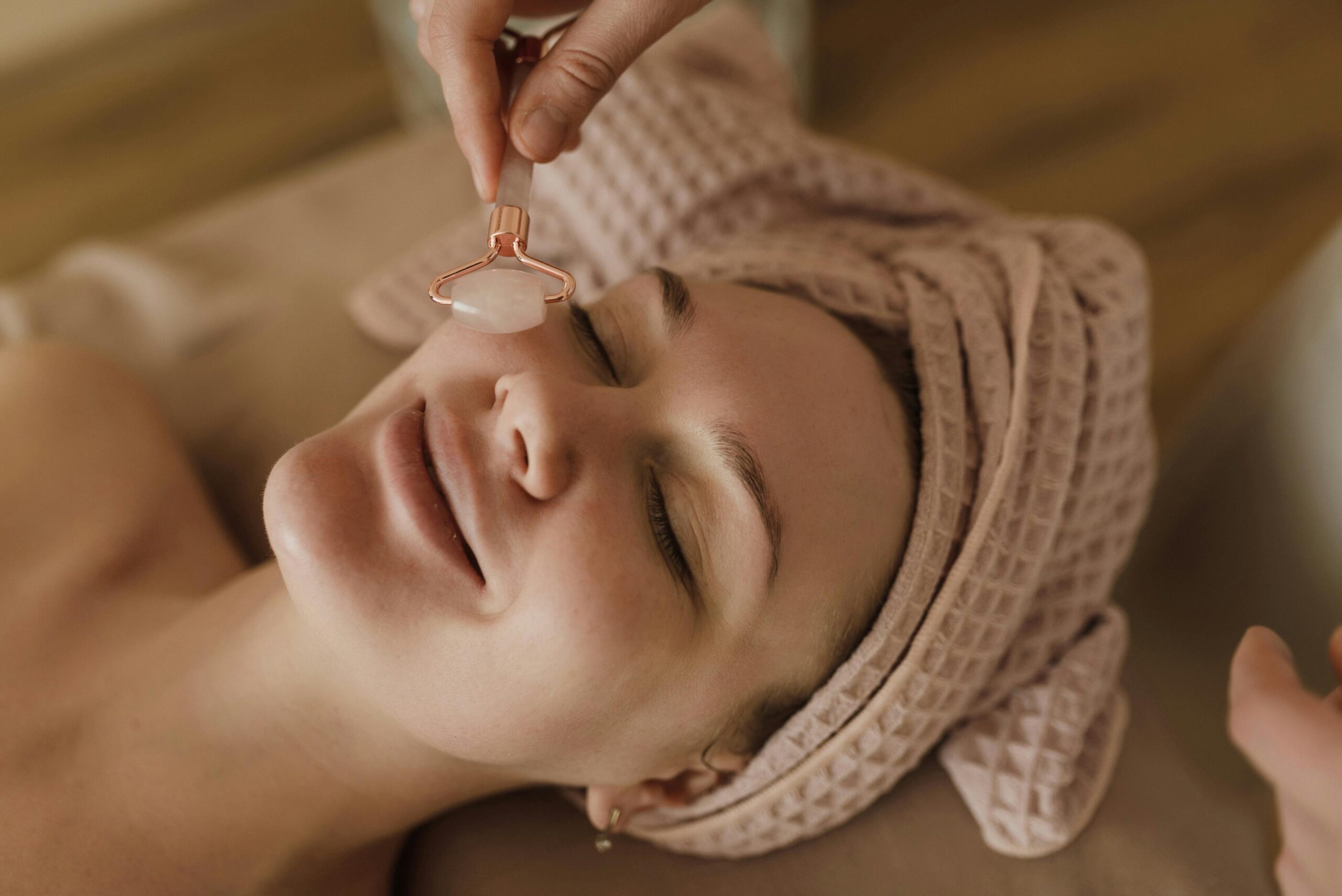
Nutrahara Blog
Nutrahara Blog
Mastering Breast Self-examination
1. Introduction: Breast Self-examination
The benefits of breast self-examinations (BSE) extend far beyond the simple act of checking for lumps. Regular BSEs foster a deeper connection with one’s body, enabling women to recognize subtle changes that might otherwise go unnoticed. This heightened awareness is particularly crucial for women aged 30 to 60, as they navigate various life stages, including menstruation, pregnancy, lactation, and menopause, all of which bring their own set of breast changes.
Women in this age group are often at the peak of their careers and personal lives, making it essential to adopt self-care routines that fit seamlessly into their busy schedules. Breast self-examinations offer a practical, non-invasive method to monitor breast health without the need for frequent medical appointments. By incorporating BSEs into their regular health regimen, women can become their own health advocates, promoting early detection and timely medical intervention when necessary.
Moreover, the practice of regular BSEs can significantly boost self-esteem and confidence. Knowing that you are actively taking steps to monitor your health can provide a sense of control and reassurance. This proactive mindset aligns perfectly with the holistic approach to health and wellness that many women in this demographic aspire to achieve. It’s not just about physical health but also about mental and emotional well-being.
2. Understanding Breast Health
Understanding breast health begins with a foundational knowledge of breast anatomy and recognizing the normal changes that can occur throughout a woman’s life. This awareness is crucial for distinguishing between typical variations and potential warning signs of breast issues.
2.1 Breast Anatomy Basics
The breasts are complex structures made up of several components:
- Lobes and Lobules: Each breast contains 15-20 lobes, which are further divided into smaller lobules. These lobules are the glands that produce milk.
- Ducts: Milk produced in the lobules is carried to the nipple through a network of ducts.
- Nipple and Areola: The nipple is the central point through which milk is expressed, surrounded by the pigmented area known as the areola.
- Fatty Tissue: This tissue surrounds the lobules and ducts, giving the breast its shape and size.
- Connective Tissue: Ligaments and fibrous tissue provide structural support to the breast.
- Lymph Nodes: These small, bean-shaped glands are part of the lymphatic system and help in fighting infections. They are located in clusters in the armpit, above the collarbone, and behind the breastbone.
2.2 Common Breast Changes
Throughout a woman’s life, breasts undergo various changes influenced by hormonal fluctuations, age, and other factors. Understanding these changes can help in identifying what is normal and what may require medical attention.
Menstruation:
- Hormonal Fluctuations: During the menstrual cycle, hormonal changes can cause the breasts to feel swollen, tender, or lumpy, particularly in the days leading up to menstruation.
- Cyclical Changes: These changes are usually symmetrical and affect both breasts equally. They typically resolve after menstruation ends.
Pregnancy and Lactation:
- Breast Enlargement: Hormones stimulate the breasts to grow and prepare for milk production, leading to noticeable enlargement and tenderness.
- Increased Vascularity: More prominent veins may become visible as blood flow to the breasts increases.
- Milk Production: The breasts become capable of producing milk, leading to fullness and, at times, leakage of colostrum (the first form of milk).
Menopause:
- Decrease in Hormones: With the decline of estrogen and progesterone, breasts may lose their firmness and elasticity.
- Density Changes: The breast tissue may become less dense and more fatty, potentially affecting the results of mammograms.
General Life Stages:
- Fibrocystic Changes: Many women experience fibrocystic breast changes, which can include lumpiness, tenderness, and discomfort. These are typically benign but can sometimes complicate the detection of other abnormalities.
- Lifestyle Factors: Diet, exercise, and overall health also play roles in breast health. Maintaining a balanced diet and regular physical activity can contribute to better breast health.
Signs of Concern:
It’s important to be vigilant about any changes that deviate from your norm. Key warning signs include:
- Lumps or Thickening: Any new, unusual lump or thickening in the breast or underarm area.
- Changes in Shape or Size: Noticeable changes in the size, shape, or appearance of the breasts.
- Skin Changes: Dimpling, puckering, or redness of the skin on the breast.
- Nipple Changes: Any new nipple retraction (pulling inward), discharge (other than milk), or changes in the appearance of the nipple.
- Persistent Pain: Any persistent pain that is not related to the menstrual cycle.
Understanding these aspects of breast health helps in forming a baseline of what is normal for you. This baseline is crucial when performing self-exams, as it allows for the identification of any unusual changes that may warrant further medical evaluation. Being knowledgeable about breast anatomy and common changes empowers women to take charge of their breast health proactively, ensuring that they can detect potential issues early and seek timely medical advice.
3. The Importance of Early Detection
Early detection of breast cancer significantly enhances treatment outcomes and survival rates. Being proactive in identifying changes in breast tissue can lead to earlier diagnosis, which is crucial in the fight against breast cancer. Understanding the significance of early detection and the methods available can empower women to take control of their breast health.
3.1 Statistics on Early Detection and Survival Rates
The statistics surrounding early detection of breast cancer highlight its critical role in improving survival rates:
- Localized Stage Detection: When breast cancer is detected at a localized stage (confined to the breast), the 5-year relative survival rate is approximately 99%.
- Regional Spread Detection: If cancer has spread to nearby lymph nodes, the 5-year survival rate drops to around 85%.
- Distant Stage Detection: When detected at a distant stage (spread to other parts of the body), the 5-year survival rate is significantly lower, around 29%.
- Overall Impact: Early detection can lead to less aggressive treatments, lower healthcare costs, and better quality of life.
These statistics underscore the importance of regular screenings and breast self-examinations (BSE) in catching cancer early when it is most treatable.
3.2 Professional Screenings vs. Self-Exams
While both professional screenings and self-exams play vital roles in early detection, they each have unique benefits and limitations.
Professional Screenings:
- Mammograms: These X-ray images of the breast are the gold standard for early detection. They can identify tumors that are too small to be felt and can detect abnormalities up to two years before they can be felt.
- Clinical Breast Exams (CBE): Performed by healthcare professionals, these exams involve physically checking the breasts for lumps or abnormalities.
- Advanced Imaging: Techniques like ultrasound and MRI can be used for further evaluation if an abnormality is detected on a mammogram.
Benefits:
- High sensitivity in detecting small tumors.
- Ability to identify cancers before they produce symptoms.
- Guided by medical expertise and advanced technology.
Limitations:
- Access and cost may be barriers for some women.
- Mammograms may be less effective in women with dense breast tissue.
- False positives can lead to unnecessary anxiety and additional tests.
Self-Examinations (BSE):
- Empowerment: BSEs empower women to be familiar with their own breasts, helping them notice changes earlier.
- Accessibility: BSEs are free, can be done at any time, and do not require a healthcare appointment.
- Complement to Screenings: BSEs are a valuable complement to professional screenings, particularly between scheduled mammograms or clinical exams.
Benefits:
- Encourages regular breast awareness and familiarity with one’s own body.
- Easily accessible and cost-free.
- Can be performed frequently, increasing the likelihood of early detection of changes.
Limitations:
- May not detect tumors that are too small to be felt.
- Requires consistent and proper technique to be effective.
- Not a replacement for professional screenings but an adjunct.
3.3 Combining Both Approaches
To maximize the benefits of early detection, it is recommended that women utilize both professional screenings and self-examinations. This comprehensive approach ensures that potential issues are caught early through various methods:
- Routine Mammograms: Women aged 40 and above, or those at higher risk, should have annual mammograms, as recommended by their healthcare provider.
- Regular CBEs: Clinical breast exams should be part of routine health check-ups.
- Monthly BSEs: Women should perform monthly breast self-examinations to monitor for any changes.
By combining professional screenings with regular self-examinations, women can significantly increase the likelihood of detecting breast cancer early, thereby improving treatment outcomes and survival rates. This proactive approach not only saves lives but also fosters a sense of empowerment and control over one’s health.
4. Breast Self-Examination (BSE)
Breast self-examination (BSE) is a crucial practice for women to monitor their breast health. Regularly examining your breasts on your own can help you detect breast cancer early when it’s more likely to be treated successfully. While no single test can detect all breast cancers early, combining BSE with other screening methods can increase the odds of early detection. More information about BSE can be found in this Breastcancer.org article.
4.1 When to Perform a breast self-examination (BSE)
Timing is essential for an effective breast self-examination:
- Menstruating Women: Perform the BSE a few days after your period ends, when breasts are least likely to be swollen and tender.
- Pregnant or Lactating Women: Choose a day each month when breasts are least engorged.
- Post-Menopausal Women: Pick a consistent day each month, such as the first or last day of the month, to perform the BSE.
Regularity is key to detecting any changes over time.
4.2 How to Perform a BSE: Step-by-Step Guide
Performing a BSE involves both visual and tactile inspection techniques:
Visual Inspection:
- In Front of a Mirror:
- Stand undressed from the waist up in front of a mirror with your arms at your sides.
- Look for any changes in the shape, size, or symmetry of your breasts.
- Check for skin changes such as dimpling, puckering, or redness.
- Raise your arms overhead and look for the same changes.
- With Hands on Hips:
- Press your hands firmly on your hips to tighten the chest muscles.
- Observe any changes, particularly in the lower part of your breasts.
Tactile Inspection:
- Lying Down:
- Lie down on your back with a pillow under your right shoulder and your right arm behind your head.
- Use the pads of your three middle fingers on your left hand to feel for lumps or thickening in your right breast.
- Move your fingers in a circular motion, covering the entire breast from top to bottom, side to side—from your collarbone to the top of your abdomen, and from your armpit to your cleavage.
- Repeat the process on your left breast using your right hand.
- In the Shower:
- Raise one arm behind your head.
- Using the opposite hand, feel your entire breast and armpit area in the same circular motions as when lying down.
- Repeat for the other side.
4.3 Tips for Effective BSE
For a more effective self-examination, consider these practical tips:
- Consistency: Perform the BSE at the same time each month to notice changes more easily.
- Technique: Use the pads of your fingers, not the tips, to feel for changes.
- Pressure: Apply different levels of pressure—light for surface changes, medium for tissue just below the surface, and firm for deeper tissue.
- Pattern: Use a systematic pattern to ensure you cover the entire breast area. Common patterns include circular, wedge, and vertical strip methods.
- Documentation: Keep a journal or notes of your findings each month to track any changes over time.
Combining BSE with regular mammograms and clinical breast exams can significantly enhance early detection efforts. Remember, BSE is a complementary practice, not a replacement for professional screenings. It empowers you to become familiar with your breasts and more likely to notice any unusual changes. For a detailed guide on BSE, visit the Breastcancer.org article.
By integrating BSE into your regular health routine, you take an active role in maintaining your breast health, potentially catching issues early and ensuring timely medical intervention if needed. This practice is a vital component of a comprehensive breast health strategy, contributing to overall wellness and peace of mind.
5. Recognizing Warning Signs: Self-examination of Breast Cancer
Being aware of the warning signs of breast cancer is crucial for early detection and timely intervention. Advances in breast cancer screening allow healthcare professionals to diagnose breast cancer earlier, significantly increasing the likelihood of successful treatment. Early detection is key, and understanding what to look for during self-examination of breast cancer can empower women to seek medical advice promptly. More details on breast cancer symptoms and causes can be found in this Mayo Clinic article.
5.1 Common Symptoms of Breast Cancer
Breast cancer symptoms can vary widely. Recognizing these signs during self-examination of breast cancer can help in identifying potential issues early:
– Lumps or Thickening:
- The presence of a new lump or mass in the breast or underarm area that feels different from the surrounding tissue. These lumps are often hard and irregular in shape, but they can also be soft and rounded.
– Changes in Size or Shape:
- Noticeable changes in the size, shape, or appearance of one breast compared to the other.
– Skin Changes:
- Dimpling, puckering, or redness of the skin on the breast.
- The skin may take on a texture resembling an orange peel (peau d’orange).
– Nipple Changes:
- Any unexplained change in the nipple, such as inversion (nipple turning inward), discharge (particularly if it is bloody), or scaling of the nipple or areola.
– Persistent Pain:
- Any persistent pain or tenderness in the breast or armpit that is not associated with the menstrual cycle.
5.2 When to See a Doctor
Knowing when to seek medical attention can make a significant difference in outcomes. If you notice any of the following, it is important to consult a healthcare professional:
– Unusual Lumps or Masses:
- If a new lump or mass is detected, especially if it feels different from other areas of the breast.
– Persistent Symptoms:
- Any persistent pain, swelling, or changes in the breast that do not resolve after one full menstrual cycle.
– Skin or Nipple Changes:
- Changes in the skin or nipple, such as dimpling, retraction, or discharge, especially if it occurs without any known cause or injury.
– General Concerns:
- Any concerns or abnormalities, even if they seem minor, warrant professional evaluation to rule out potential issues.
Red Flags During Self-Exams
When performing breast self-examinations, be vigilant for the following red flags:
- A New Lump: A new, unexplained lump or thickening in the breast or underarm.
- Changes in Contour: Visible distortion or swelling of the breast.
- Skin Texture: Redness, scaliness, or thickening of the nipple or breast skin.
- Nipple Discharge: Any discharge, especially if it is bloody, spontaneous, or occurs from only one nipple.
- Persistent Pain: Persistent pain that is not linked to your menstrual cycle.
Importance of Professional Evaluation
While self-exams are a critical tool for early detection, professional evaluation is essential for any abnormalities:
– Mammograms and Ultrasounds:
- These imaging tests can provide a clearer picture of any lumps or changes detected during self-exams.
– Biopsies:
- If imaging tests indicate an abnormality, a biopsy may be performed to determine if the lump is cancerous.
– Clinical Breast Exams (CBE):
- Regular CBEs by healthcare providers can detect issues that may not be noticed during self-exams.
Advancements in breast cancer screening and diagnostic methods have made early detection more effective than ever before. For more detailed information on breast cancer symptoms and causes, visit this Mayo Clinic article.
Recognizing the warning signs of breast cancer and knowing when to seek medical advice are vital components of breast health awareness. Early detection not only improves the chances of successful treatment but also contributes to better overall outcomes and peace of mind. Being proactive about any changes or abnormalities can make a significant difference in your breast health journey.
6. Real Life Testimonials
Hearing real-life stories from women who have experienced breast cancer can provide powerful insights and encouragement. These testimonials highlight the importance of breast self-examinations (BSE), regular screenings, and paying attention to warning signs. They serve as reminders of the impact that early detection can have on outcomes and offer hope to others facing similar challenges.
6.1 Emily’s Story: The Power of Self-Examination
Emily, a 35-year-old marketing executive, shares how a routine breast self-examination led to early detection:
- Routine Check: Emily had always been diligent about performing monthly BSEs, as advised by her mother who had survived breast cancer.
- Discovery: One evening, she noticed a small, firm lump in her left breast that hadn’t been there the previous month.
- Immediate Action: Emily scheduled an appointment with her doctor the next day, who recommended a mammogram and ultrasound.
- Early Detection: The tests confirmed a small, early-stage tumor. Because it was caught early, Emily underwent a lumpectomy and localized radiation therapy.
- Outcome: Today, Emily is cancer-free and continues to advocate for the importance of regular self-examinations and early detection.
Emily’s experience underscores how consistent self-monitoring can lead to early diagnosis and more effective treatment.
6.2 Sarah’s Journey: Combining Screening Methods
Sarah, a 47-year-old teacher, emphasizes the importance of combining professional screenings with self-examinations:
- Annual Mammograms: Sarah had been diligent about her annual mammograms since turning 40.
- Unexpected Change: During a routine BSE, she noticed a slight dimpling on the skin of her right breast.
- Follow-Up: Although her recent mammogram had been clear, she trusted her instincts and consulted her doctor.
- Advanced Imaging: An ultrasound revealed a small area of concern that hadn’t been visible on the mammogram. A subsequent biopsy confirmed early-stage breast cancer.
- Comprehensive Treatment: Sarah underwent surgery followed by chemotherapy. Her treatment was challenging but successful.
- Advocacy: She now speaks publicly about the importance of combining BSE with regular professional screenings for comprehensive breast health monitoring.
Sarah’s story illustrates that even with regular mammograms, personal vigilance and BSE can play a crucial role in early detection.
6.3 Maria’s Experience: Navigating Menopause and Breast Health
Maria, a 55-year-old entrepreneur, shares her journey of detecting breast cancer during menopause:
- Hormonal Changes: Maria experienced significant hormonal changes during menopause, including changes in breast texture.
- Persistent Lump: She noticed a persistent lump in her breast that felt different from the usual fibrocystic changes she had experienced before.
- Prompt Medical Advice: Maria’s proactive approach led her to consult her healthcare provider immediately.
- Diagnosis: A mammogram and biopsy confirmed that the lump was malignant, but it was caught at an early stage.
- Treatment: Maria underwent a mastectomy followed by reconstructive surgery and is now cancer-free.
- Encouragement: She encourages other women going through menopause to remain vigilant about their breast health and to not dismiss any unusual changes.
Maria’s experience highlights the importance of paying attention to breast changes during menopause and the value of prompt medical consultation.
7. Resources and Support
Navigating breast health and cancer diagnosis can be challenging, but numerous resources and support systems are available to provide guidance, information, and emotional support.
7.1 Educational Resources
Access to reliable information is crucial for understanding breast health and cancer:
- org: Offers comprehensive information on breast self-exams, diagnosis, treatment options, and support.
- Mayo Clinic: Provides detailed articles on symptoms, causes, and treatments of breast cancer.
- American Cancer Society: Offers educational materials on prevention, early detection, and treatment of breast cancer.
7.2 Support Groups
Support groups provide emotional support and shared experiences from those who have been through similar journeys:
- Local Support Groups: Many hospitals and community centers offer breast cancer support groups.
- Online Communities: Websites like Breastcancer.org host forums where women can share their experiences and advice.
- National Organizations: Organizations such as Susan G. Komen and the National Breast Cancer Foundation provide support and resources.
7.3 Helplines and Hotlines
Helplines offer immediate support and information:
- National Breast Cancer Helpline: Provides emotional support and information.
- CancerCare Helpline: Offers counseling and practical support.
- American Cancer Society Helpline: Available 24/7 for information and support.
Utilizing these resources can provide the necessary support and information needed to navigate breast health challenges effectively.
8. Conclusion
Maintaining breast health through proactive measures such as regular self-examinations and professional screenings is essential for early detection and successful treatment of breast cancer. Breast self-examinations (BSE) empower women to become familiar with their own bodies, enabling them to notice changes that might indicate a potential issue. This practice, combined with professional screenings like mammograms and clinical breast exams, forms a comprehensive approach to monitoring breast health.
Written by the Nutrahara Team
This article was developed by the Nutrahara team of nutrition scientists and naturopaths, who specialize in formulating safe, effective, and science-backed supplements for women’s health. Every ingredient we use is carefully selected to support your body’s unique needs—naturally. Follow us on LinkedIn for expert insights and updates on our latest wellness solutions.






